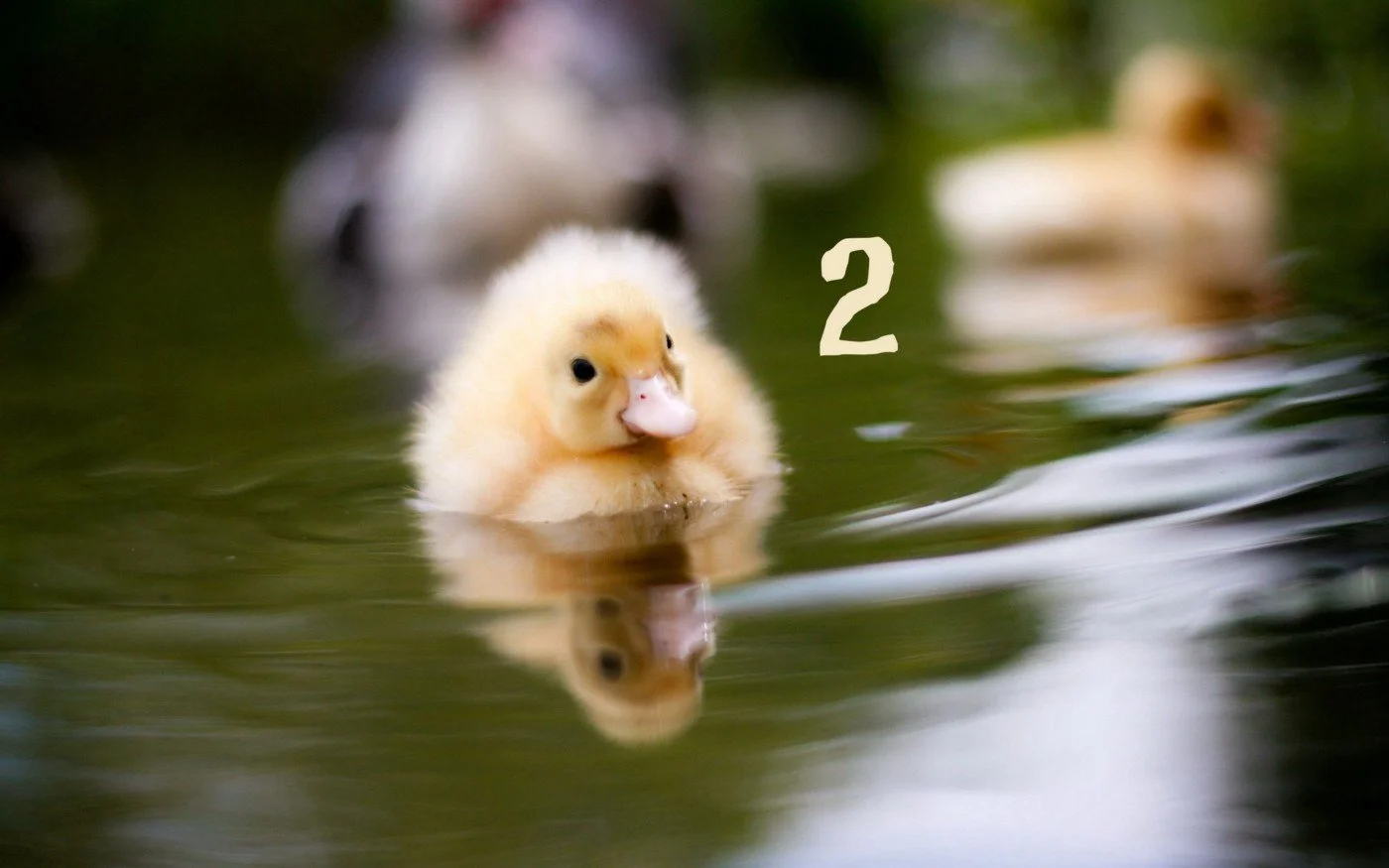The premise for this piece is that much of rapidly our "alternative subcultures" have slowly been morphing from an "ask cultures" to a "guess cultures"
What is an "ask culture"? It's a culture where asking questions where discovering a new way of being is more desirable than making assumptions about it. It also tends to be a newer culture (or subculture) where the inner workings of the culture and the "right" behavior are still getting figured out, allowing for a lot of leeway around how to interpret things and engage with people, requiring a high level of curiosity.
However, as an "ask culture" starts to settle, it slowly but surely becomes a "guess culture" where more and more assumptions are being made about the "right" way to engage, and as such people start to guess more and more how to do it.
(Click the title to read the rest)
Just as a safer sex conversation can a useful way to mitigate risks when it comes to intimate physical encounters with others, the RDBSM(ATDP) conversation can be a beautiful way to reduce the risk of emotional challenges with new intimate partners. Each letter represents a topic to discuss so that both partners have greater awareness about their partner as a complex human with complex circumstances.
This conversation can look like: each person going through all the topics at once or going through each topic together and each person speaking about it in turn:
When should you have a RDBSM(ATDP) conversation? I
In the context of bringing care and consideration for a new intimate partner, we recommend you have this conversation as soon as you realize that an engagement will move towards to a level of emotional or physical intimacy that is deeper than friendship. It’s okay to check in by saying “I’m sensing that this might go deeper than something platonic. Would you be open to take the time to have an RDBSM(ATDP) conversation so we can fully consider each other and engage in a way that feels good as we dive deeper into this engagement?”
(click the title to read more)
As you look back on an intimate experience with another person and integrate what you explored, discovered, and learned from these intimate moments, it might be a good time to consider checking in with them (if you haven't done so already)
In many circles, this is called aftercare: a way to check-in, reconnect, and offer support towards each other's integration and the feelings that might have come up. It is a form of longer and deeper attunement which includes not only the engagement itself, but also care and consideration for what happens next in someone's experience as they process what happened post engagement.
Along with aftercare, I also like to do an additional piece which I call a debrief. I learned this with a new lover: after any experience with someone, she would want to talk about it, not only to get a chance to relive the turn on of the experience and squeeze even more goodness and memories out of it, but also squeeze the goodness of the intimacy and learning that would come with it.
So what are debriefs?
(click the title to read more)
Along with the free love culture of the 60's and the new-age/neo-tantra culture that came afterward came the idea of "instant-intimacy"
The idea that we can quickly form intimate bonds with one another.
Eventually, apps like Tinder, Bumble, OK Cupid, and countless speed dating, tantra retreats, play parties, and other relational and group experiences came to answer the call of what humans appear to desire above all else: connection.
And it slowly started to make sense: faced with ease of living wherever we are called and an ever greater source of intimate partners via social media and apps like Feeld and Grindr as well as a multiplicity of relational non-monogamous models, the world began to explore what is possible like the proverbial kid in the candy store.
(click the title to read the rest)
(I wrote this a few years ago after a mediation I went through with someone in another community)
Whenever we witness a conflict between two people, one of the most difficult things to do is to establish what is actually happening between them.
Mostly, it’s impossible.
You might be unlucky enough to speak to one person first and hear them speak of the other person in the most demonizing ways they can. And this will play into any biases you already have about any group they might appear to be a part of.
What happens when the person being demonized is a man? How easy is it to perceive them according to the new narratives emerging about them? About us?
I’ve spent 30 years digging deep into myself around this, from the time I was with my first and second girlfriend, both having been assaulted and abused by men. And during these years, I explored not only the ways there might be such a dangerous man inside of me, but also the ways he might be inside of other men.
30 years of exploring my own misandry.
(click the title to read more)
(Note: In this conversation I will use responsibility to also mean accountability)
For this game we take a whole new look at the conversation around the topic of Responsibility and its role in conflict. Clear your mind of what you know and dive in.
In relationship or any engagement between adults, responsibility is usually something that is shared (to some degree) between all parties involved.
Imagine responsibility as something that can be measured in terms of “quantity”. When responsibility is taken for everything that happens in the engagement/relationship, everyone knows the part they play and to what degree they affect the outcome. Generally, this means everyone is happy in the engagement and there's little conflict: I cook, you do the dishes. You want more touch, you tell me and I respond with more touch. I drive and you navigate. If I'm unhappy, I share with you about it and you know where you can rise up because it's your responsibility. Or you can refuse and I can take responsibility.
(click the title to read the rest)
Classic right?
They are pulling away all the time.
They shut down when you try to bring up a relationship concern.
They don’t respond to their messages in a timely manner.
They don’t meet your needs.
They don’t give you enough reassurance.
They don’t tell you they love you enough.
(click the title to read the rest)
Note: I use the word “narcissist” as an illustration only, not as a definition for someone. This post is more related to avoidant attachment style)
Someone comes into my field, we connect, and I feel immense love for them. I express this love with an open heart… We share a period of deep Communion, sometimes nearly soul shattering!
As the days go on… I find it more and more difficult to continue giving love and affection at this level… It isn’t sustainable. I am just one person, and their need begins to feel like a deep well.
I have always refilled my own cup by spending time alone…withdrawing from the world. Giving myself the love and attention I need.
Click the title to read more.
I think the quote below is great.
And, it fails to acknowledge the deep need many people have to be chosen, to be someone else's top choice.
Some say "I choose myself first" and fair enough, they do, and everyone else comes second.
Some choose (or nature does) their child(ren).
Some choose their pet.
Some choose their partner.
Some choose each moment, each engagement, each bite of food they ingest.
We forget the power of choosing and being chosen.
(click the title to read more)
In Love Letter #1, we looked at how the anxious attachers’ loss-prevention strategies are often the very things that *cause* the loss they’re so afraid of. We looked at it under an electron microscope, so you could see every psychological mechanism (and its impact on others) with excruciating clarity.
In Love Letter #2, we looked at how to do things differently, taking a sober look at how to manage the inevitable intoxication of the falling-in-love drugs, so that you can build a real foundation for your relationship that could last your whole life long.
And in Love Letter #3, we’re going to be looking through the electron microscope once again at just one small piece of the anxious attachment puzzle: our relationship to our own desires and needs.
Let’s jump in…
When we’re really young, we have SO many needs — my god, so many needs. In a “good enough” environment, those needs are mostly met, most of the time, and it’s fine. We don’t need perfection in order to be okay — great, even. But for most of us, there was one thing or another that we really needed, that our environment couldn’t consistently provide (eg. unconditional love, safety, attunement, encouragement, etc.), or there was some part of the environment that was fundamentally broken (eg. family, home, money, sexuality, etc.).
(click the title to read the rest)
Sobriety in the Spike & The Two Transformations
The central point of the first “Love Letter to the Anxiously Attached” was this: anxious attachers are wired up to have stronger feelings (sooner) and to bond deeper (faster) in the beginning of a new relationship. They also tend to rush into lots and lots of intimacy, which means that the need for consistency and security is probably going to come online sooner for them than it will for their lover — which is likely going to be more than that person (or the relationship) are ready for.
A lot of these responses are baked into the nervous system, so it really isn’t a matter of stopping it from happening. Rather, it’s about learning to maintain a degree of mindfulness while it is happening — just enough so that you can make different kinds of choices. I call it “Sobriety in the Spike.”
The “Spike” is that initial stage of relationship where you can’t stop thinking about them, where you’re willing the time to pass until you can see them again, where being with them is the most intoxicatingly pleasurable thing you can possibly imagine. It’s a surge of hormones and neurotransmitters that are doing precisely what they were evolutionarily designed to do. Thing is, the Spike isn’t “like” drugs, it IS drugs, and there are some highly predictable ways that they will distort your perception of reality and compel you do all kinds of things you wouldn’t ordinarily do.
(click the title to read more)
Think of the last time you cuddled with someone. What happened in the seconds and minutes that followed the call to cuddle? Was it smooth, awkward, quick, slow, weird? Did it feel comfy, edgy, scary, good, bad, etc? How many times did it take to really feel the two of you coming together gracefully? How many times did it take for the two of you to learn to do it perfectly and effortlessly?
So there's this thing we do when we meet someone new and decide that we want to connect with them more deeply, more intimately, which is very similar to cuddling. It involves bringing their sense of reality together with ours, which means their preferences, their morality, their perspective, their fears, their experience, and much much more, together with ours for the purpose of reaching a certain level of coherence and shared reality.
Click the title to read the rest.
A baby boy is born to a young mother and a father, and his father sees that “his hands are almost as big as his head!” He thinks to himself, “yeah, he’s got my genetics.”
The mother and father have come from homes that do not talk about weakness, only success and accomplishment. He loses his cool one day and begins to hit his wife while she takes the punches with one arm and shields the infant boy with the other from the violence. The baby’s mind is soaking in all this unconsciously, and he learns implicitly that the world isn’t safe...little does he know the father also beat her when she was pregnant with him as well. Each event releases excess cortisol within that infant, hindering healthy brain development and setting the stage for perceiving the world as a dangerous place. ...but we all know in this small town that this baby will be okay. After all, “he has such great genetics!”
Click the title to read the rest.
Maybe it's over lackluster date nights. Maybe it's about intimate or difficult conversations. Maybe its romantic gestures. Maybe its verbal affirmations.
Whatever the case may be, our dissatisfaction can only be held on to for so long before it seeps out and tarnishes the surrounding environment. It feeds a divisive, resentful, contemptuous atmosphere. It doesnt matter what the desire is, or how valid it is to desire (which it usually is very valid!).. it matters that our deep inner culture of dissatisfaction will erode any potential for improvement, and invite only further dissatisfaction to the party.
When we look at the different core wounds of the AP and DA characters, it can often be described as :
The way these characters demonstrate protection of those core wounds, can often look like hypervigilance and hypersensitivity to anything that resembles those core types of pain. Where they branch apart, is often in how they address that hypersensitivity.
Click the title to read more.
After reflecting on the feedback on my part 1 of this post, I believe there’s a lot of interest in revealing the secret strategy to having our needs met by our dismissive leaning partners. A sort of "How To Ask So We Get a Yes" guidebook. A script to follow to override our partners avoidant reluctance.
I sense there will be a fair bit of disappointment when I confess .. that's not what I have prepared for you. I can't write out any special vocabulary to guarantee you will see affirmative action. There are no secret cheat codes to hack into the hidden core of needs-meetingness in our partners. I cant give you a password to unlocking whatever form of connection your partner has been "withholding".
I'm here to help us AP leaning folks take a look inward, to find the REAL gateway to sustainable progress, so we can experience the fulfillment we deserve and desire. Stay with me, I promise this gets better ♡
Within each of us exists a small fragment of person, representing our innermost childlike persona. Whatever joyful childlike wonders, whatever most natural desires, whatever most innocent fears, and whatever unresolved trauma we carry from our formative years, we retain within this persona. Being disconnected from this "small inner us" doesn’t remove them from the equation, it just blocks "big outer us" from perceiving and acting on what they need us to do. Adult attachment is this "small inner us", in action. (Yes, dismissive types have a "small them" tagging along too, but very rarely is that persona accessible for them in the early stages.)
Click the title to read more.
What are boundaries?
• a boundary is a personal limit we place around our participation within relationships. They may be involving physical contact, emotional proximity, personal privacy, language, and more. They exist within our realm of control. Imagine, I could not trespass on my neighbours property and go lock him in a cage for stealing my flowers, but I can stand on my own property and put a protective fence around my garden.
• boundaries can vary from one extreme to the other. Too rigid and harsh, or too soft and pliable. The ideal boundary exists in the middle of that spectrum, where there is a healthy stability.
• boundaries allow us to maintain a healthy sense of self within relationships, whether romantic or not. Boundaries allow us to appropriately balance and meet our own needs, while being able to acknowledge and accommodate the meeting of other needs that present in our environments.
(click the title to read the rest)
The above is an amazing breakdown of the phases/stages of the journey to secure. I'm paraphrasing here but it generally follows as such...
1. Unconscious Insecurity
2. Conscious Insecurity
3. Conscious Security
4. Unconscious Security
And its REEEEAALLY important to know where you land when engaging with others.
What does this mean?
If you're at level 1 and 2, you are almost certainly still a slave to your attachment wounds and reactions.
At level 1, unconscious insecurity, you don't even know how insecure you are. You are literally unaware of the wound, and unaware of how these wounds effect your behavior. This means you are almost certainly REACTIVE vs. RESPONSIVE. This means the stories and beliefs your attachment wound has created are running the show, and its likely you'll be triggered by anything or anyone who hits your pain points in just the right way. You will be an endless train of emotional reaction.
(click the title to read the rest)
(this article was originally posted by Nile Abasi on June 5, 2020)
I have a lot to say about the events occurring in the world right now -- much of which is contrary to any political agenda or 'correctness'. I believe some of what I have to say will be confronting to many, and if I'm honest part of me is afraid of being crucified for going against the grain of my primary liberal community but ultimately -- I am more committed to living truthfully and being honest than I am to being liked (although I have to admit, I do like it when you like me).
For those of you who don't know I'm the product of a biracial lesbian couple conceived in the heart of the nineties (close to the times of the Rodney King riots).
One of my mom's (my birth mom) is a white woman with blonde hair and blue eyes from Shaker Heights Ohio, and my other mom is a black woman from South Central LA (Compton). From birth I was raised and influenced by two completely opposing cultural backgrounds.
My biological father was a sperm donor. He is a black man I know very little about other than he was studying to become a lawyer, had high cheekbones and a nice smile.
(click the title to read the rest)
(this was originally posted on the Attachment Community Facebook Group)
I’ve recently been seeing many people commenting on Dismissive Avoidants (DAs) not caring about emotions, and being completely indifferent to processing anything with their partners. I just wanted to provide my own view of this, in the hopes that this might provide another dimension of understanding here.
Superpowers emerge when we go into the places where the insecurities of our attachment systems (the most sensitive parts) have over-compensated to survive, and we begin healing these parts of ourselves. We uncover the power in the deep sensitivity of these areas, and then allow the richness of wisdom here to flow through our lives.
So, while the Anxious attacher's superpower is in the realm of empathy and the Avoidant attacher's is about intellectual understanding, the Disorganized attacher's superpowers are all about somatic/primal awareness.
We’ll cover all three here.
(click the title to read the rest)
Trying to emotionally balance on someone who is trying to do the same thing with you will usually lead to a very challenging balancing act.
This is normal.
Ever seen two acrobats balancing on each other? There’s usually a “base” and a “flyer”. There’s never two bases or two flyers balancing on each other.
The same is true emotionally with two people. It’s always much wiser to have a base (the most emotionally balanced partner) and a flyer (the person exploring their emotions) at any one time.
For three people, you’ll notice that in a counseling/therapy situation, the practitioner will always be a version of a “base” and the partners will either be a combination of base/flyer or flyer/flyer.
In other words, it’s CRUCIAL that there be enough balance in the system (either using at least one partner or one practitioner as the base) for a volatile/challenging situation to not become too dangerous.
Again, same as with partner acrobatics.
(click the title to read the rest)




















